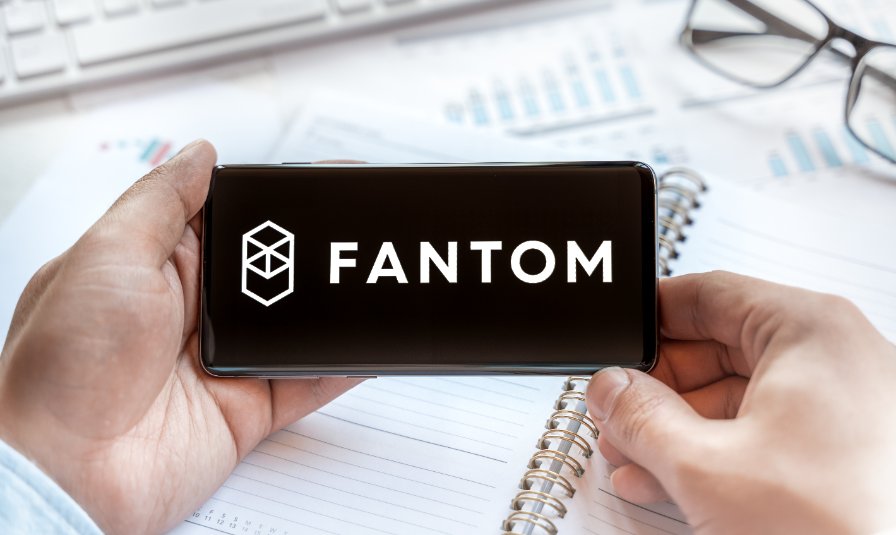
Tether, Circle und andere Stablecoin-Firmen halten zusammen US-Schuldtitel im Wert von 80 Milliarden US-Dollar und damit einen größeren Anteil als Berkshire Hathaway.

Finanzmittel Info + Krypto + Geld + Gold
Krypto minen, NFT minten, Gold schürfen und Geld drucken

Tether, Circle und andere Stablecoin-Firmen halten zusammen US-Schuldtitel im Wert von 80 Milliarden US-Dollar und damit einen größeren Anteil als Berkshire Hathaway.

According to a news post by the co-founder of Acala Network, Bette Chen, the Acala community has voted to burn 2.97 billion Acala USD (aUSD) stablecoins.
Acala is a scalable and Ethereum-compatible layer-1 smart contract platform built on Polkadot blockchain and it is the blockchain network that powers the aUSD stablecoin.
aUSD is over-collateralized by several digital assets from the Kusama network and Polkadot ecosystem, with a deposit rate of 195% per every minted aUSD.
Last week, the price of aUSD de-pegged from its US dollar peg and dropped to below $0.01. The cause for the de-pegging was later found to be a sudden influx of the aUSD stablecoin supply caused by an erroneous minting.
3.022 billion aUSD stablecoins were erroneously minted after the iBTC/aUSD liquidity pool that went live on August 14 was misconfigured.
The misconfiguration has however since been rectified and the wallet addresses that benefited from the erroneously minted aUSD identified through on-chain tracing. Thirty-five accounts were found to have received 12.38 million aUSD.
More than 99% of the erroneously minted aUSD were then transferred to the Acala parachain. But some, approximately worth $9.69 million, had been swapped to DOT and moved to centralized crypto exchanges.
The aUSD is currently trading at about $0.84 which is still below its dollar parity; meaning the erroneous minting is still affecting the system’s equilibrium.
The post Acala community okays burning billions of erroneously minted aUSD stablecoin appeared first on CoinJournal.

Fantom has dipped 4.71% in the past day and 23.51% in the past week
The token is currently retracing within a consolidation
A dip below the support could open more sell trades
Fantom FTM/USD has been adversely affected by the bearish correction in cryptos. The token is down 4.71% in the past day, with weekly losses at 23.51%. Currently, FTM is trading at $0.2905. Despite the negative trend, Fantom is one of Ethereum’s rivals with strong fundamentals.
Fantom is a highly scalable independent decentralized project. The blockchain is suitable for decentralized applications and cryptocurrencies. With its lower transaction fees and Fantom Opera’s high throughput, it is one of the fast-paced blockchains.
DeFi users, enterprise apps, and Ethereum virtual Machine developers are currently flocking the network. FTM, which powers staking and governance functions, is yet to reap the gains of the network’s growth. The token has remained at the center of crypto volatility.
FTM has lost a whopping 91% from its highest point year to date. The short-term technical outlook shows consolidation amid a weak momentum.

Source: TradingView
According to the daily chart, FTM has been locked in a consolidation pattern. The token has been trading between $0.2 and $0.42 price levels. The pattern has been maintained for about four months.
Currently, FTM is on a retracement amid a bearish momentum. The 20-day and 50-day moving averages offer resistance to the upside. The two averages are possible points of consolidation or resistance in the case of a trend reversal.
The RSI is currently at 36, the lowest level since June. Despite the indicator approaching the oversold zone, FTM should overcome the $0.42 resistance level to become bullish. If the reverse happens, the token could retest lower levels.
FTM faces a strong bearish momentum, with more than 23% weekly losses. The token has remained in consolidation for longer. The token could trade lower if the $0.2 support level fails to hold.
The post Watch $0.2 support as Fantom retraces amid consolidation appeared first on CoinJournal.

Ethereum Classic is trading slightly below key support of $34
The token is expected to benefit from the Ethereum merge; however, disputed
Ethereum Classic could head to $26 next if it loses the $34 technical battle
Ethereum merge euphorbia seems to be now fading. As the September 15 date fast approaches, Ethereum and hard fork Ethereum Classic ETC/USD are falling. That, of course, is not to mean that the hard fork will not have a bullish impact on price. If speculations are to be believed, Ethereum’s price will hit $5,000 after a successful merge. Its hard fork, Ethereum Classic, is expected to surge too on the influx of PoW to the protocol. The idea is still disputed if, indeed, Ethereum Classic will benefit. ETC gains have been direct as a result of expectations.
It is too early to speculate that ETC will benefit from Ethereum Merge. However, speculations will remain as cryptocurrencies are known to benefit from them, if positive. Thus, we cannot underestimate how much ETC could surge in the 3 weeks to the merge. We still urge caution as the technical indicators are currently not pricing to a potential merge rally.

Source – TradingView
Ethereum Classic trades at $32. The price below key support at $34 indicates bear momentum. Using a short time frame of 4 hours, we can see that the MACD line has moved above the moving average. That suggests a short-term price appreciation. The momentum indicator still remains in bear territory.
Potential price discovery is expected to push Ethereum Classic to $34. However, the token will remain bearish if the price fails to break past $34. A price rejection will see bears take control, with ETC potentially crashing to $26.
The post Is Ethereum Classic losing the technical battle at $34? appeared first on CoinJournal.

ADA has dipped 3% in the past day.
Reports of a bug in one of Cardano’s testnets likely to delay Vasil upgrade.
Technical indicators are looking bearish below the $0.56 resistance level.
Cardano’s ADA/USD has dropped 3% in the past day, increasing weekly losses to 19%. Its market capitalization is down to $15,218,450,837 with lower trading volumes. ADA trading volumes reduced by 8% to slightly above $650 million in the past day.
The bearish momentum in Cardano is partly linked to the ongoing crypto market correction. Aside from the correction, an important fundamental aspect has shaken the smart contract blockchain. A bug reported in its testnet could delay the anticipated Vasil hard fork.
Cardano’s founder Charles Hoskinson has refuted the claims, which termed the testnet ‘catastrophically broken’. Hoskinson said that the bug had already been solved in a previous update and was not a major issue. He maintains that the concerns could unnecessarily delay the hard fork.
Vasil upgrade is expected to introduce major updates on Cardano. Some benefits include enhanced throughput speed and reduced latency of block transmission. However, there have been multiple delays, with the latest being in July. The delays are causing a subdued performance in ADA, as shown in the daily chart below.
 Source: TradingView
Source: TradingView
According to the technical chart above, ADA has retested the $0.43 support level. The level has been retested several times since mid-May. Overall, the token has remained subdued at under $0.56 for the past three months.
The technical indicators are not looking bullish either. MACD histograms are red, with the trend following lines crossing close to the neutral point. The Stochastic Oscillator is at the lowest point since July 13.
At 11, the momentum indicator is at the oversold zone and could be due for a bounce back. However, with the momentum being bearish, the token must flip $0.56 to welcome any bullish sentiment.
ADA has retested a key support level. The technical and fundamentals are pointing to more bearish pressure. A bullish momentum can only be possible past the $0.56 resistance.
The post Cardano retests key support amid bearish sentiment and testnet concerns appeared first on CoinJournal.